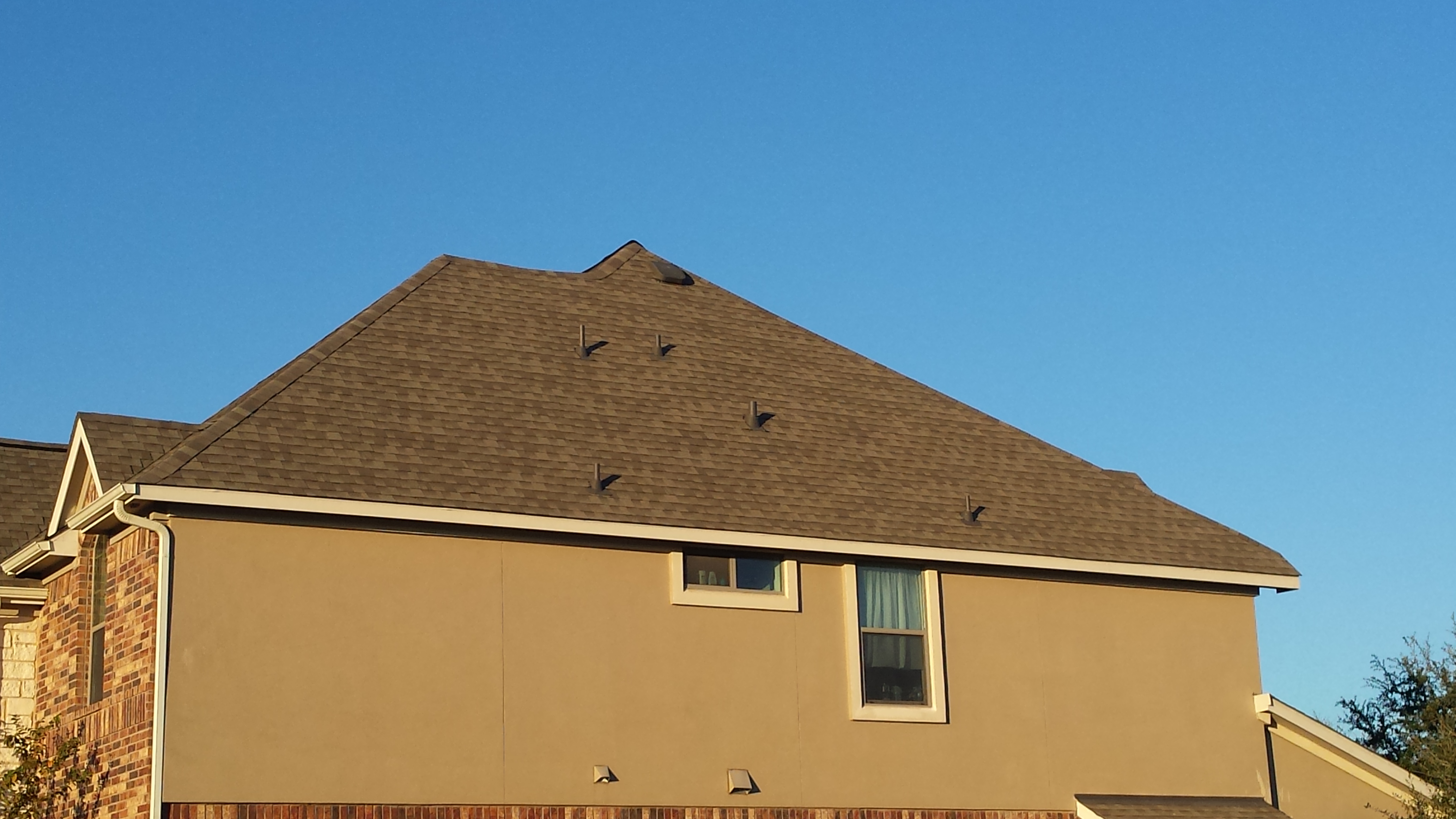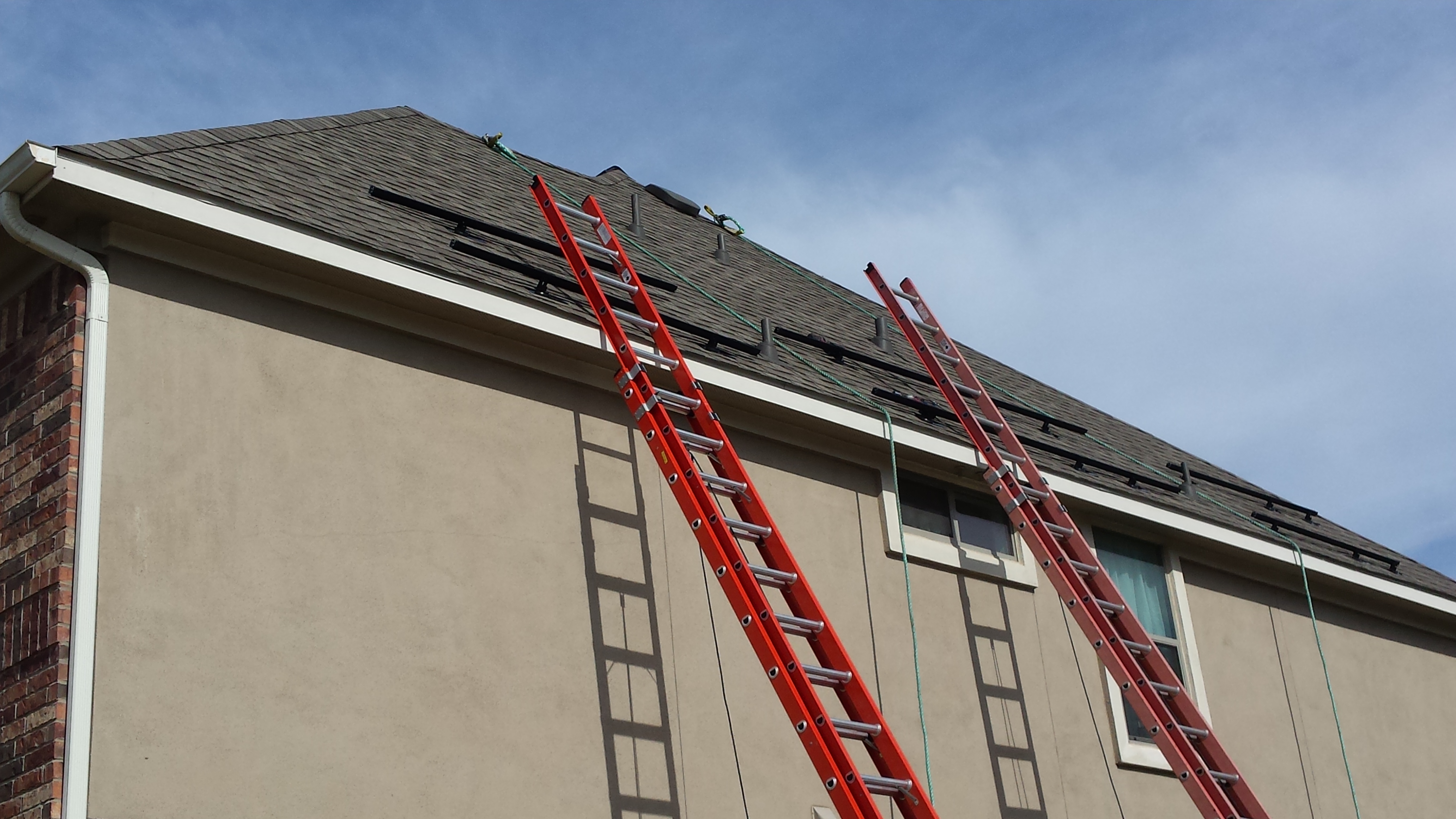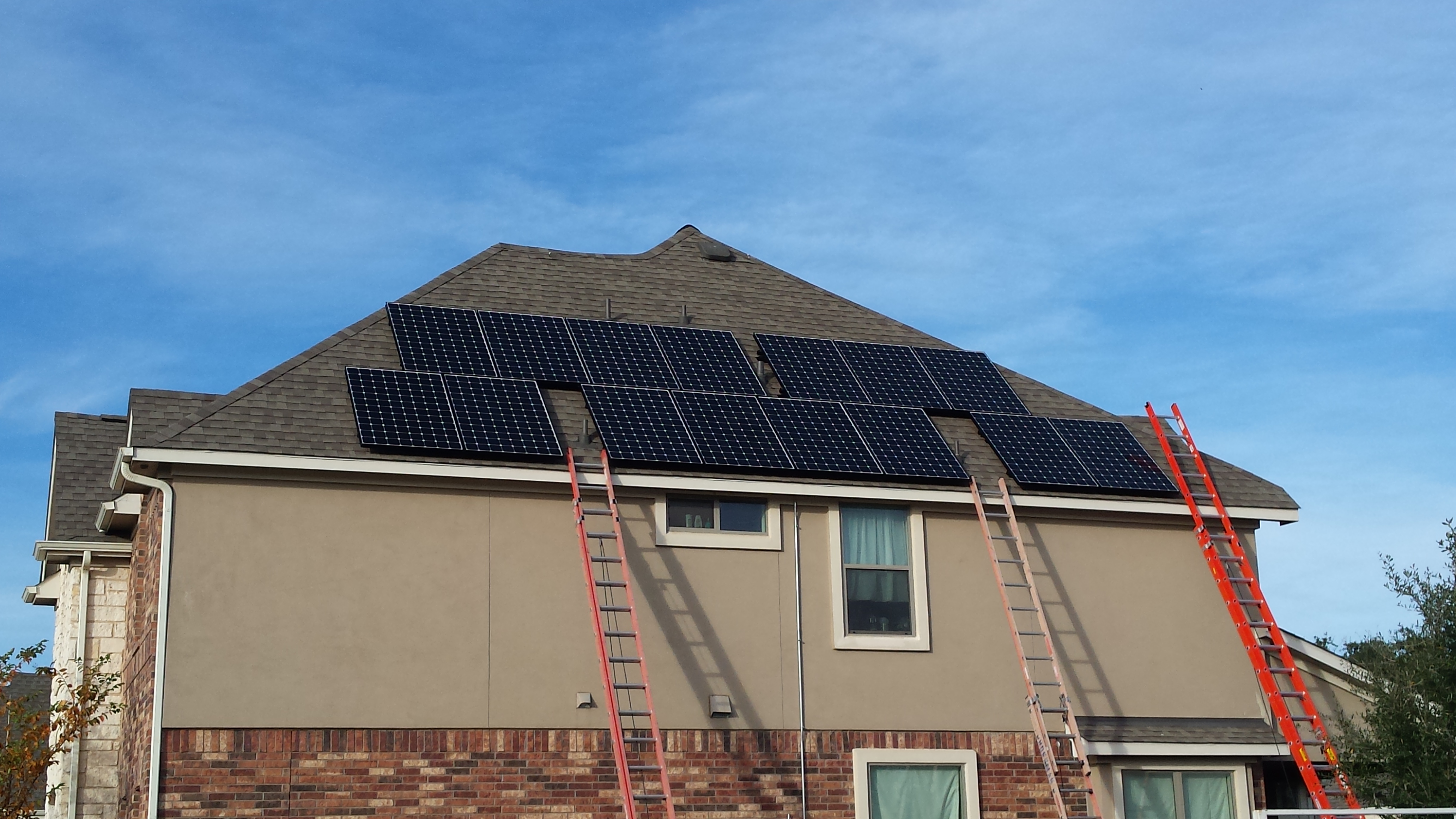And we’re up! We have 15 327-Watt panels on our roof. The max rated capacity is 5.5 kilowatts (kW). Even on a slightly cloudy day at 4PM (in the late fall), we were producing 4.8 kW.
The hardest part of the entire process was the homeowners association. Actually, it was the developer who balked, but they couldn’t legally deny us. Texas is such a mish-mash of rules and laws.
This is the roof before panels.
Looking at this image, it’s really doesn’t look like much would fit there. All the plumbing vent pipes are in the way.
Our installer was really great. (If you’re in central Texas, contact me using the form and I’ll get you their contact info and a little discount.) The two master electricians laid out the system very nicely. In the end, it took about 2.5 days. They worked for half a day on Monday and then all day Wednesday and Thursday.
These are the mounting rails. Each rail is mounted on two flanges that are bolted into the rafters. The panels clip onto the rails and the electrical wires run through the rails to a conduit that drops down to the inverter. That converts the direct current generated by the panels to the alternating current used by the house and the grid.
It’s kind of funny when you think about it. We generate DC current with solar panels, wind turbines, and industrial generators. And all of our appliances and devices use direct current. But we convert it to alternating current in between. There’s a lot of history and some physics behind that reason, but it’s interesting.
Here’s our entire grid. We can probably fit another 3-4 panels above the top row and we can put west and east facing panels on the rest of the house. We might do that in a few years.
What we have right now is enough to cover 90% of our electricity usage in the spring and fall. Winter is usually very cloudy here, so even though we use much less electricity, we don’t anticipate generating that much. Maybe we’ll get about 50% of our usage from the panels.
Summer in Texas is the killer. We have all the power saving measures, keep the thermostat at 78°F, extra insulation and all that. Still our electric bill in August and September is 4 times what it is in December.
Luckily, this is when the panels will be generating at their peak. The sun is high in the sky (rather than low as in the winter) and it’s overhead for longer. Even so, this will probably only reduce our summer bill by about 1/3.
As I mentioned in Part I, the electric utility is thinking about moving to peak power billing to encourage lower use in the summer. This system will certainly keep us below any reasonable peak usage limit, preventing our bill from skyrocketing.
There’s not much else to say. Solar panels installation and use is just like the two blog posts. You do a lot of research, studying, talking to people and contractors. You spend days comparing equipment and designs and budgets. Then, once the decision is made, you’re done and the install is painless and quick (if you got the right contractor). Then you can sit back and enjoy the fruits of your labors (or checkbook).
I know that not everyone can do this, even a small scale system like this one. But the benefits for the environment and the consumer are pretty high. This modest system was less than the cost of my very plain, previously used as a demo, car. And it’ll produce electricity for us for the next 30 years.
Oh, I wanted to include a picture of my weirdly awesome cat hanging out in her favorite place.




